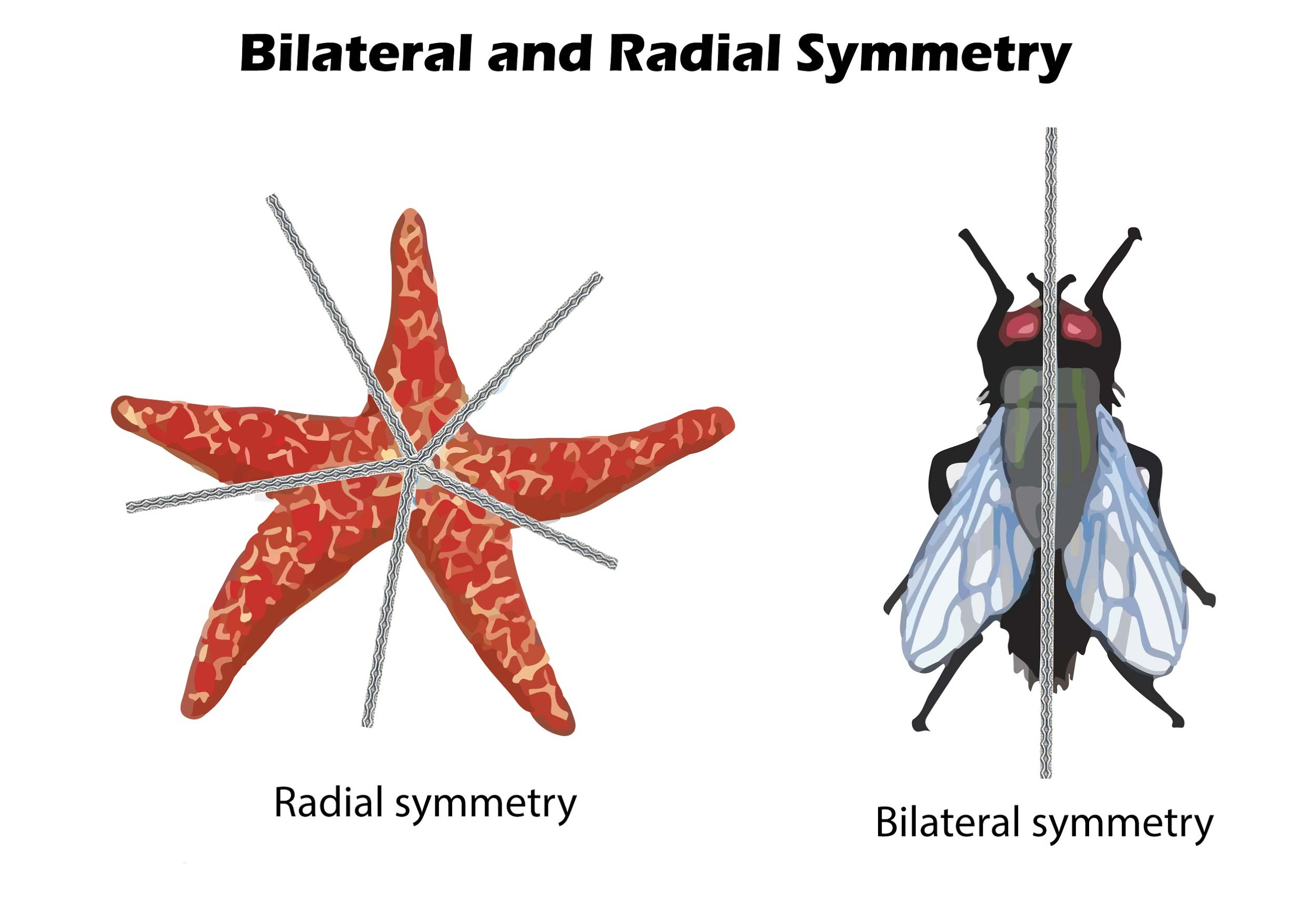
Radial symmetry occurs in
(a)Fishes
(b)Molluscs
(C)Starfishes
(d)Few species of sponges
(e)Both (c) and (d)
Answer
506.1k+ views
1 likes
Hint: The radial symmetry is commonly found in the animals of the phylum Cnidaria and Echinodermata. These animals do not move much and having this symmetry helps them to reach into their environment on all sides because of the phenomena that says with radial symmetry, animals could be divided into equal portions from the center.
Complete answer:
Radially symmetrical organisms have only top and bottom surfaces.they do not have any right or left side and also no back or front side. Radial symmetry occurs in starfishes and few species of sponges. When a radially symmetrical animal is cut from one side to the other side through the center it will give you equal halves of the organism.

Additional Information: -Only a few animal groups bear radial symmetry. Generally, sponges are asymmetrical animals but few show radial symmetries.
-Radial symmetry is the main characteristic features of sessile and bottom-dwelling animals such as the sea anemone and starfish. Floating animals such as jellyfish also show this symmetry.
-Like other chordates, fishes have a bilaterally symmetrical body.
-Mollusks are also bearing a bilaterally symmetrical body.
So, the correct answer is “Radial symmetry occurs in starfishes and few species of sponges”.
Note: -George Cuvier was the first to classify animals with radial symmetry in the taxon Radiata.
-In animals, bilateral symmetry favors in locomotion by generating a streamlined body.
-Bilateral symmetry is characteristic of the majority of animals, including insects, fishes, amphibians, reptiles, birds, mammals, and most crustaceans.
-spherical symmetry occurs only in those organisms which can be cut into two identical halves by any cut that runs through the center of the organism’s body. approximate spherical symmetry is found in freshwater green alga Volvox.
Complete answer:
Radially symmetrical organisms have only top and bottom surfaces.they do not have any right or left side and also no back or front side. Radial symmetry occurs in starfishes and few species of sponges. When a radially symmetrical animal is cut from one side to the other side through the center it will give you equal halves of the organism.

Additional Information: -Only a few animal groups bear radial symmetry. Generally, sponges are asymmetrical animals but few show radial symmetries.
-Radial symmetry is the main characteristic features of sessile and bottom-dwelling animals such as the sea anemone and starfish. Floating animals such as jellyfish also show this symmetry.
-Like other chordates, fishes have a bilaterally symmetrical body.
-Mollusks are also bearing a bilaterally symmetrical body.
So, the correct answer is “Radial symmetry occurs in starfishes and few species of sponges”.
Note: -George Cuvier was the first to classify animals with radial symmetry in the taxon Radiata.
-In animals, bilateral symmetry favors in locomotion by generating a streamlined body.
-Bilateral symmetry is characteristic of the majority of animals, including insects, fishes, amphibians, reptiles, birds, mammals, and most crustaceans.
-spherical symmetry occurs only in those organisms which can be cut into two identical halves by any cut that runs through the center of the organism’s body. approximate spherical symmetry is found in freshwater green alga Volvox.
Recently Updated Pages
Master Class 11 Economics: Engaging Questions & Answers for Success

Master Class 11 Business Studies: Engaging Questions & Answers for Success

Master Class 11 Accountancy: Engaging Questions & Answers for Success

Master Class 11 English: Engaging Questions & Answers for Success

Master Class 11 Computer Science: Engaging Questions & Answers for Success

Master Class 11 Maths: Engaging Questions & Answers for Success

Trending doubts
Which one is a true fish A Jellyfish B Starfish C Dogfish class 11 biology CBSE

State and prove Bernoullis theorem class 11 physics CBSE

1 ton equals to A 100 kg B 1000 kg C 10 kg D 10000 class 11 physics CBSE

In which part of the body the blood is purified oxygenation class 11 biology CBSE

One Metric ton is equal to kg A 10000 B 1000 C 100 class 11 physics CBSE

Difference Between Prokaryotic Cells and Eukaryotic Cells




